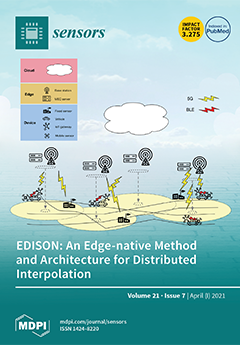Development of sensor materials based on metal oxide semiconductors (MOS) for selective gas sensors is challenging for the tasks of air quality monitoring, early fire detection, gas leaks search, breath analysis, etc. An extensive range of sensor materials has been elaborated, but no
[...] Read more.
Development of sensor materials based on metal oxide semiconductors (MOS) for selective gas sensors is challenging for the tasks of air quality monitoring, early fire detection, gas leaks search, breath analysis, etc. An extensive range of sensor materials has been elaborated, but no consistent guidelines can be found for choosing a material composition targeting the selective detection of specific gases. Fundamental relations between material composition and sensing behavior have not been unambiguously established. In the present review, we summarize our recent works on the research of active sites and gas sensing behavior of
n-type semiconductor metal oxides with different composition (simple oxides ZnO, In
2O
3, SnO
2, WO
3; mixed-metal oxides BaSnO
3, Bi
2WO
6), and functionalized by catalytic noble metals (Ru, Pd, Au). The materials were variously characterized. The composition, metal-oxygen bonding, microstructure, active sites, sensing behavior, and interaction routes with gases (CO, NH
3, SO
2, VOC, NO
2) were examined. The key role of active sites in determining the selectivity of sensor materials is substantiated. It was shown that the metal-oxygen bond energy of the MOS correlates with the surface acidity and the concentration of surface oxygen species and oxygen vacancies, which control the adsorption and redox conversion of analyte gas molecules. The effects of cations in mixed-metal oxides on the sensitivity and selectivity of BaSnO
3 and Bi
2WO
6 to SO
2 and VOCs, respectively, are rationalized. The determining role of catalytic noble metals in oxidation of reducing analyte gases and the impact of acid sites of MOS to gas adsorption are demonstrated.
Full article






